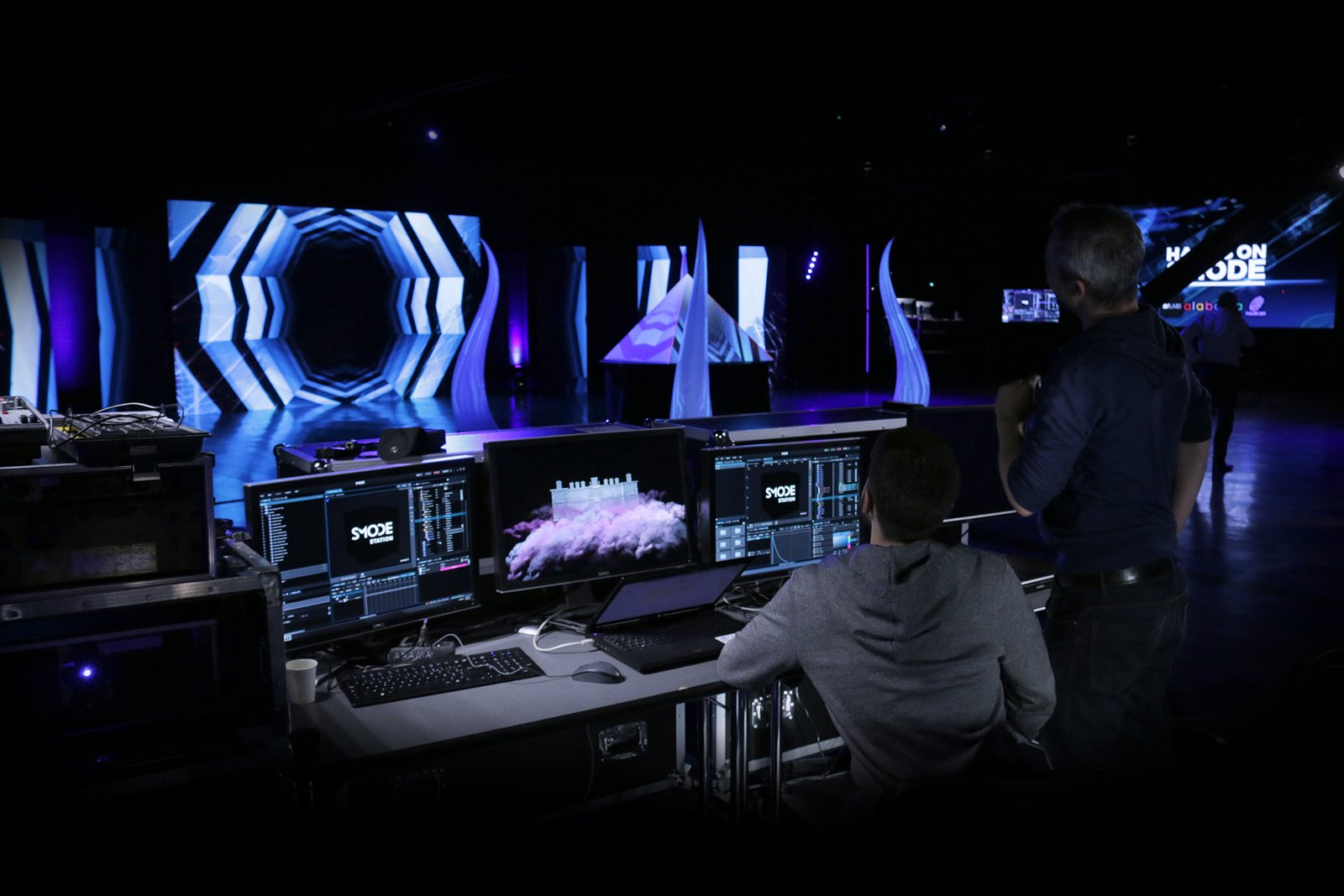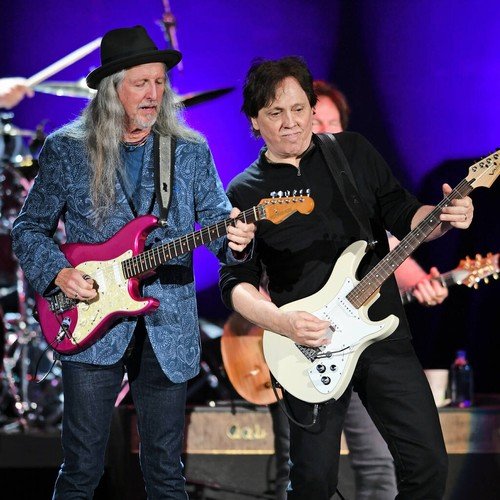Arpeggiators are one of the best tools to create beautiful melodies. Because let’s face it: writing melodies is hard.
At its core, arpeggios are simply notes from a chord played consecutively.
Sounds pretty simple right? However, modern DAWs and MIDI keyboards bring them a step further. All you need is a chord progression to create beautiful leads, atmospheric pads, and more.
That’s what we’ll cover in this guide! Together we will look at:
- What an arpeggiator is
- How to create arpeggios with your MIDI keyboard
- Arpeggiator tricks in FL Studio and Ableton Live
- The best (free!) arpeggiator plugins out there
- 3 creative ways to use arpeggiators in your music
Let’s dive in! 👇
Arpeggiators and Arpeggios: What Are They? 🤔
You might be thinking: “Arpeggiators? I’ve never heard of that before…”.
But I’m sure you’ve heard the term “arp” before.
Arps are a staple of modern electronic music. They are very common in sample packs:

So what are arps, arpeggios and arpeggiators?
Arp simply stands for arpeggio: a chord where the notes are played in a rising or descending order.
Some famous examples include the main theme of “Clocks” by Coldplay, “Everybody Hurts” by R.E.M and “Can’t Help Falling In Love With You” by Elvis Presley:
But I could have literally picked from hundreds of well-known songs. That is how popular arpeggios are.
The term “arpeggio” actually finds its origin in the Italian word arpeggiare – meaning “to play upon the harp”. This is because the traditional harp is played one note after the other.
Arpeggiators on the other hand are a more modern invention.
An arpeggiator is an automated version of an arpeggio. Arpeggiators came to prominence with the rise of synthesizers:

Instead of having to play every single note in time, you simply play a chord. The synth then plays out the notes of your chord separately.
Arpeggiators are included in most MIDI keyboards, as well as most hardware and VST synths. There are even dedicated plugins to create arpeggios!
How to Create Arpeggios
As we discussed, arpeggios are a sequence of notes borrowed from a chord. This means you could record them manually – if you have a good sense of rhythm! Or you could draw them one by one in your piano roll.
But using an arpeggiator makes the whole process faster and more creative.
There are 3 main ways to generate arpeggios:
- With your MIDI keyboard
- Through your piano roll
- With a third-party plugin
Let’s explore them! 👇
Your MIDI Keyboard’s Arpeggiator
Firstly, let’s take a look at arpeggiators on MIDI keyboards. Most modern MIDI keyboards will have an “arpeggiator” or “arp” section.
If your keyboard has beat division such as 1/8, 1/16 etc. over the keys, you have an arpeggiator:

Let’s go over some of the parameters of an arpeggiator:
- Tempo: sets the tempo at which the arpeggio plays
- Division: how many notes are played per beat
- Swing: sets the amount of swing added to the sequence
- Mode: determines in which sequence the notes are played
- Octave: over how many octaves will the arpeggio play
- Latch: when enabled, the arpeggio keeps playing even when you release the notes
Let’s explore each of these with some examples.
Note: the way you access parameters will be different for each MIDI keyboard. So make sure to read the manual!
Parameters of an Arpeggiator
Tempo sets the speed of your arpeggiator. Usually, you will want it identical to your project’s tempo.

Division lets you decide how many notes play per beat.
Common beat divisions include 1/4, 1/8 and 1/16:
Note that in these 2 examples, I am simply playing an A minor chord. The arpeggiator is doing the rest!
Next, swing lets you add more or less swing to your sequence:

Mode lets you choose in what order the notes are played.

Common modes include UP, DOWN, ORDER and RANDOM:
In both these examples, I am playing the same A minor chord.
“ORDER” is another useful arpeggiator mode. It will play the notes in whichever order you press them.
Octave determines how many octaves the arpeggio plays.
Finally, “Latch” will continue to arpeggiate the notes even after you lift your fingers.
FL Studio: The Arpeggiator Tool
If you don’t have a MIDI keyboard, don’t worry. Modern DAWs provide many ways to generate arps.
Let’s have a look at FL Studio. First, draw in the chord you want to arpeggiate:

The duration of the chord will determine how long the arpeggio lasts. Next, go into your Piano Roll tools. There, select “Arpeggiate”:

You will be greeted with the arpeggiator settings window:

Here you can switch between different arpeggio patterns. You can also select the octave range.
Decreasing the “time multiplier” will increase the number of notes, and vice-versa.
On the other hand, “Gate” lets you shorten or lengthen each note.
Finally, you can also access pre-saved MIDI patterns:

FL Studio’s arpeggiator is definitely a useful tool. However, I do find its parameters a bit limited and not that intuitive at times. But if you’re looking for some quick inspiration, it definitely works!
Ableton Live: The Arpeggiator Plugin
Ableton Live takes a different approach with its arpeggiator.
Here, you have a separate plugin that processes your chord:

Under MIDI Effects, load up the Arpeggiator. Next, load up your synth, and draw in a MIDI chord.
The effect will be an arpeggio, even though your Piano Roll shows a chord:
Let’s have a look at some of the parameters of this arpeggiator:

Style lets you pick from more than a dozen different arp sequences:
Next, “Rate” and “Gate” determine the beat division and length of each note:
The “Transpose” section lets you switch between major and minor keys. You can also shift your sequences up or down any number of semitones:

Finally, the “Velocity” section is a cool way to accentuate certain notes:

Looking to bring your arpeggiator skills to the next level? Check out our latest video on YouTube channel 👇
Third-Party Arpeggiator Plugins (Free!)
An arpeggiator is an effect like any other. Instead of adding reverb or delay, you are transforming the chords into a sequence of notes.
This means that there are many plugins you can use to generate arpeggios.
So let’s have a look at some of the best free arpeggiator plugins out there.
BlueARP

BlueARP definitely doesn’t boast the most modern UI. But its arp and step sequencer capabilities make up for it.
Some of its parameters include:
- Gate time
- Swing
- Sync (beat division)
- “Force to scale”: the arpeggiator will only play notes in a given scale
BlueArp also combines the power of a step sequencer.
This means you can adjust each note of your sequence with different velocities, gate times, octave jumps, etc.
Finally, you get more than 128 presets to play with, from acid sequences to techno basslines.
Podolski by U-He
By the makers of Diva comes Podolski, a virtual analog synth with arp/sequencer functions:

Its synthesis features are bare-bone: 1 oscillator, 1 filter, and 1 envelope.
However, its arpeggiator section comes with plenty of customization options.
For example, each step of the arpeggio can be modulated further with LFO and filtering:

You can also change the length of each note to create more rhythmic patterns:
Finally, you can transpose each note individually to create custom sequences:

Oh, and did I mention it was extremely CPU-light?
Hypercyclic
Here’s another plugin that deserves a makeover:

However, don’t be fooled by the interface.
This arpeggiator can create pretty much any arp sequence imaginable.
Some of its features include:
- two tempo-synced LFOs to modulate various parameters
- possibility to modulate the sequencer step size itself. This can lead to interesting glitchy effects
- a groove function for off-beat playing. The groove parameters can also be modulated over time by the LFOs
In the words of its maker, Hypercyclic is “at the border between chaos and regularity”. You can quickly introduce randomness and syncopation, all while keeping the musicality.
So… When Should I Use Arpeggios?
Now that we’ve looked at how to use an arpeggiator, let’s look at “when”. One of the most common ways of using an arpeggiator is for your lead melodies.
But there are many more unique ways to use arpeggios 👀
Let’s look at a few 👇
Create Movement in Your Pads
One issue many beginners face is not having enough movement. What do I mean by “movement”?
The way I like to understand “movement” is: are things static? Or are they evolving?
Let me give you 2 examples:
Movement can come from a lot of different things. Stereo imaging, subtle filtering, phasing…
One way to create movement in your pads is to use an arpeggiator.
For example, you can turn this chord progression…

… into something like this:

I simply transformed the chords into an arp, then set the reverb to 100% Wet.
Here’s another example of a pad made with an arpeggiator:
Create Counter-melodies
In music theory, a counter melody is a secondary melody played in counterpoint with the primary melody.
Its goal is to add texture and interest to a track. Many examples of this can be heard in Beatles recordings:
Arps can be a great way to introduce countermelodies in your tracks. Here’s an example:
You can hear how the arp sits in the background and adds interest. Using an arpeggiator is a great way to keep your track moving forward.
Create Human-sounding Drums
I know I said that an arpeggio is a chord broken down into notes.
But… what if we used an arpeggiator on… hi-hats for example?
This is a great way to create realistic grooves.
For this, I am going to use Ableton Live’s Arpeggiator. First, load up a Drum Rack and an Arpeggiator:

What I’ve done is load the same hi-hat 4 times into the Drum Rack. I’ve then made subtle changes to each one. I changed for example the pitch, the volume, and the envelope.
Then, set the Arpeggiator to “Random” style, and Rate to 1/16. Finally, draw in all 4 notes in the piano roll like such:

The arpeggiator is now going to run through the 4 variations of our hi-hat at random. Give it a listen:
That’s a Wrap!
That’s it for this guide! Hopefully, you now have a better understanding of how arpeggiators work. 😊
Did I miss out on anything? Let me know at [email protected].




